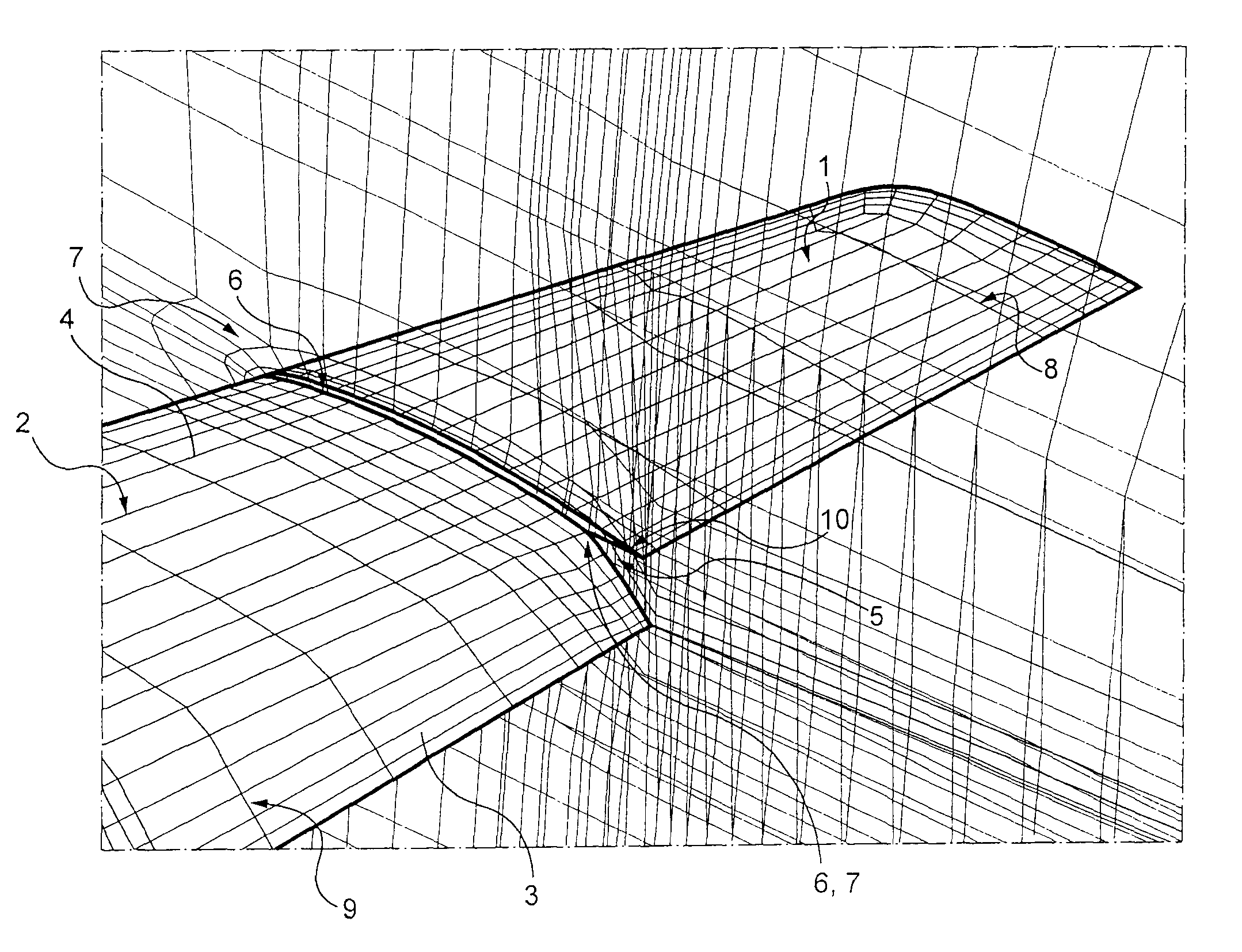Method of predicting the aerodynamic behavior of an aircraft element
- Summary
- Abstract
- Description
- Claims
- Application Information
AI Technical Summary
Benefits of technology
Problems solved by technology
Method used
Image
Examples
Embodiment Construction
[0068]According to the invention, in order to predict the aerodynamic performance of an aircraft wing, one proceeds as follows.
[0069]In a first step, a digital form representative of the form that the wing assumes under predetermined operational and environmental conditions is prepared. The operational conditions to be determined prior to the implementation of the method according to the invention relate in particular to the deflection or non-deflection of the moving surfaces of the wing and the angles of deflection chosen, as the case may be.
[0070]On the attached FIGURE, a digital form representing an aircraft wing, created according to the invention, may be seen in part. On this digital form, a non-high-lift part 1 corresponding to an end section of the wing is perceived. It is to be noted that this end section in reality is equipped with a low-speed aileron. Nevertheless, under the predetermined conditions studied here, the low-speed aileron is in non-deflected position, so that ...
PUM
 Login to View More
Login to View More Abstract
Description
Claims
Application Information
 Login to View More
Login to View More - R&D
- Intellectual Property
- Life Sciences
- Materials
- Tech Scout
- Unparalleled Data Quality
- Higher Quality Content
- 60% Fewer Hallucinations
Browse by: Latest US Patents, China's latest patents, Technical Efficacy Thesaurus, Application Domain, Technology Topic, Popular Technical Reports.
© 2025 PatSnap. All rights reserved.Legal|Privacy policy|Modern Slavery Act Transparency Statement|Sitemap|About US| Contact US: help@patsnap.com


